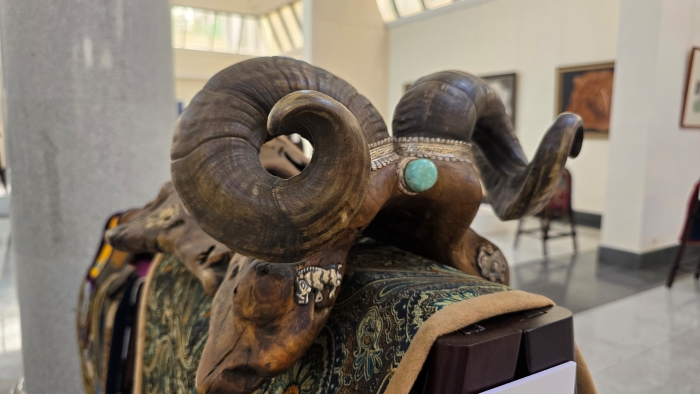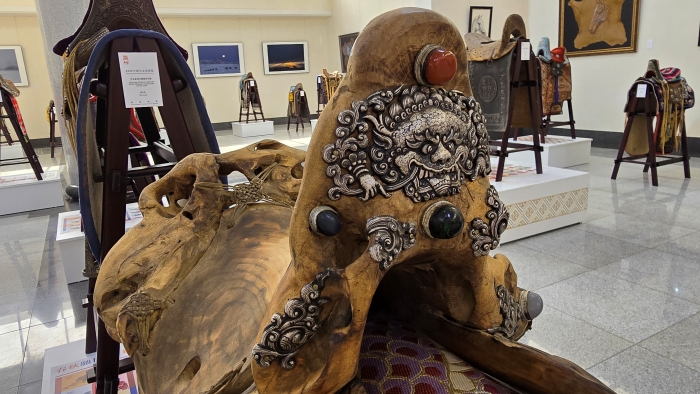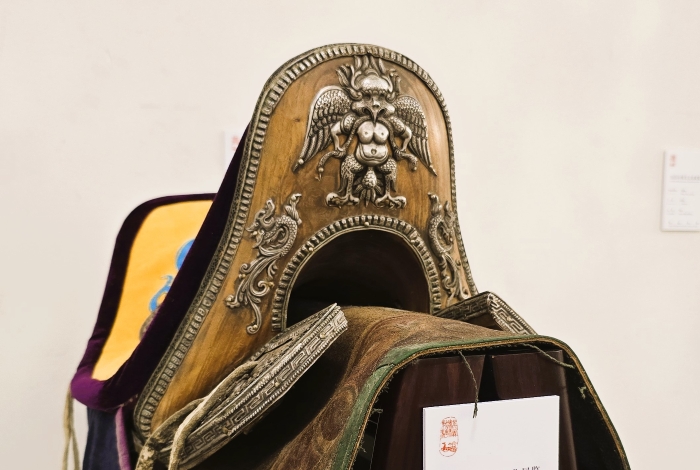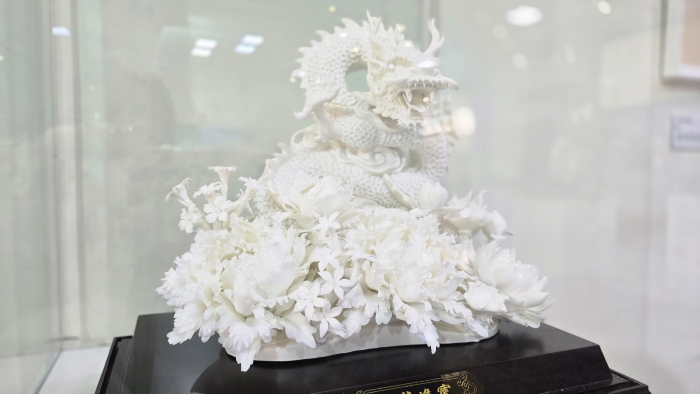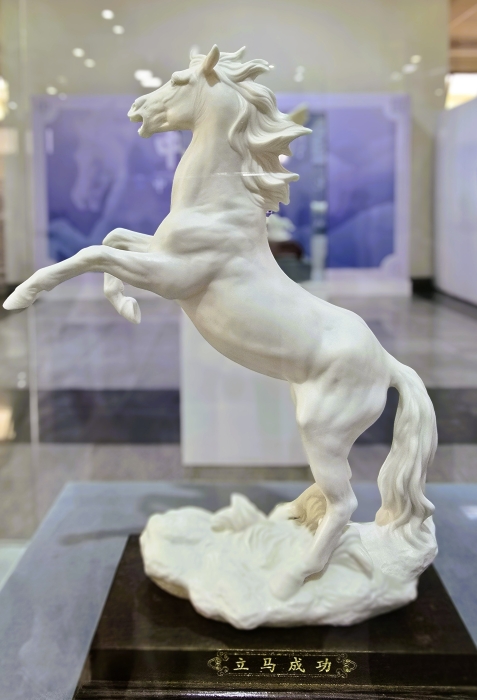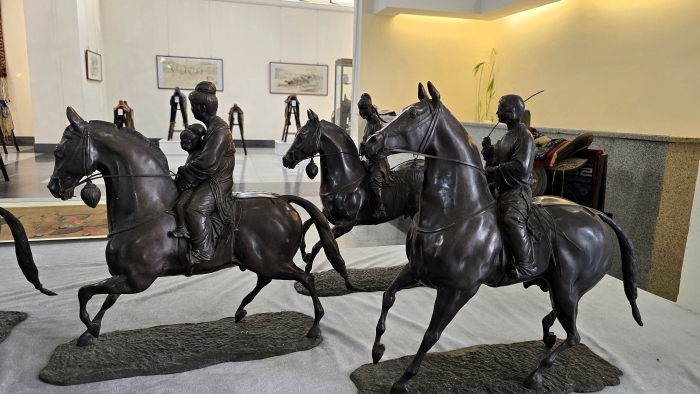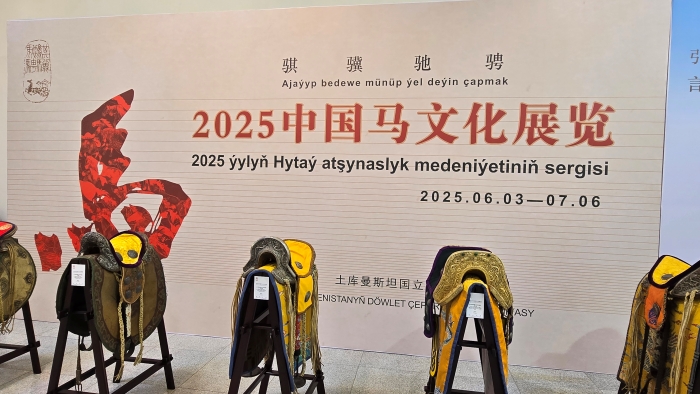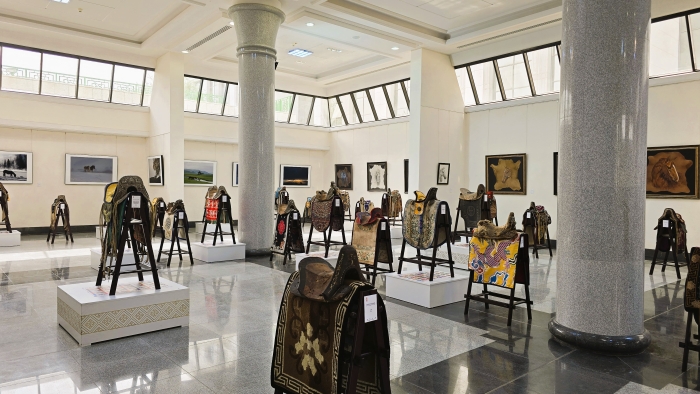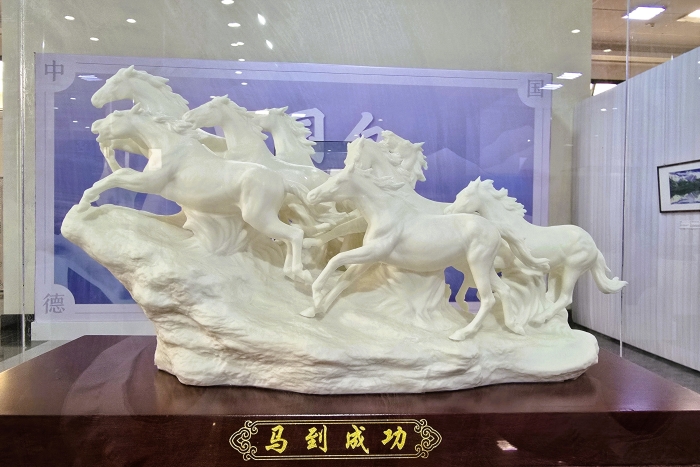Elvira Kadyrova, photo by Tamir Shakirov
A unique exhibition, “Chinese Equestrian Culture 2025,” has opened at the gallery of the State Academy of Arts of Turkmenistan in Ashgabat. Around 150 exhibits—saddles, paintings, photographs, sculptures, calligraphic works, and paper crafts—reveal the deep connection between China and Turkmenistan through a shared love for horses and the artistry of craftsmanship.
The second section is dedicated to porcelain from Dehua County (Quanzhou City, Fujian Province), a craft with a history spanning over 4,000 years.
In Chinese tradition, white, one of the five noble colors, was considered by ancient masters as the foundation of all existence.
Jade-white and creamy-white Dehua porcelain flourished during the Tang and Song dynasties, reaching its peak in the Yuan and Ming periods (1368–1644). From the 10th century, these items became a key part of trade between China and the West, and by the 14th century, masters like Chaozhou (Ming Dynasty) brought Dehua porcelain worldwide fame, gracing the collections of porcelain enthusiasts globally. Over time, artisans enriched the craft with innovative ideas, expanding themes and refining techniques.
The exhibition showcases 40 modern porcelain masterpieces, divided into six themes: “Longma (Dragons-Horse),” “Beautiful Youth,” “Voices of Flowers,” “Unshakable Spirit,” “Spirit of the People,” and “New Frontiers.”
Sculptures capture heroes of legends, scenes from scholars’ lives, and mythical creatures, all crafted with striking vividness, showcasing the depth of the concept and a high level of skill.
A special section is devoted to depictions of horses. These glossy, snow-white sculptures spark the imagination—centuries ago, as legends of Turkmenistan’s Akhal-Teke horses spread eastward along the Silk Road, the fame of Dehua porcelain’s luxury traveled westward via vibrant caravans crossing Turkmen lands.
Perfection and eternity—perhaps these are the verbal associations linking Dehua porcelain and Akhal-Teke horses.
Horses hold a special place in the cultures of both nations. In China, equestrian traditions date back millennia, while in Turkmenistan, Akhal-Teke horses are renowned as “heavenly horses.”
These steeds became part of Chinese culture, their significance affirmed by the inclusion of Akhal-Teke horse breeding and decoration traditions, alongside China’s “Spring Festival,” in UNESCO’s Representative List of the Intangible Cultural Heritage of Humanity.
The love for horses has united China and Turkmenistan for centuries. The China Horse Industry Association and Turkmenistan’s State Association “Turkmen Atlary” have successfully implemented a strategic agreement for over a decade, fostering cooperation in the equestrian field. In 2026, the Year of the Horse according to the Chinese calendar, this exhibition carries special symbolic weight.
The exhibition is organized with support from the Information Office of the State Council of the PRC, the Ministry of Agriculture of the PRC, the Ministry of Culture and Tourism of the PRC, the Embassy of China in Turkmenistan, the Ministry of Culture of Turkmenistan, the State Academy of Arts of Turkmenistan, the Embassy of Turkmenistan in the PRC, and other organizations. One stand declares: “We dedicate the exhibition ‘Chinese Equestrian Culture 2025’ to the hardworking, courageous, and determined Turkmen people, as well as the eternal friendship between China and Turkmenistan.”
The exhibition runs until July 6, 2025. Don’t miss the chance to experience perfection, where porcelain and “heavenly horses” tell a story of cultural unity.///nCa, 4 June 2025
Photo report:

